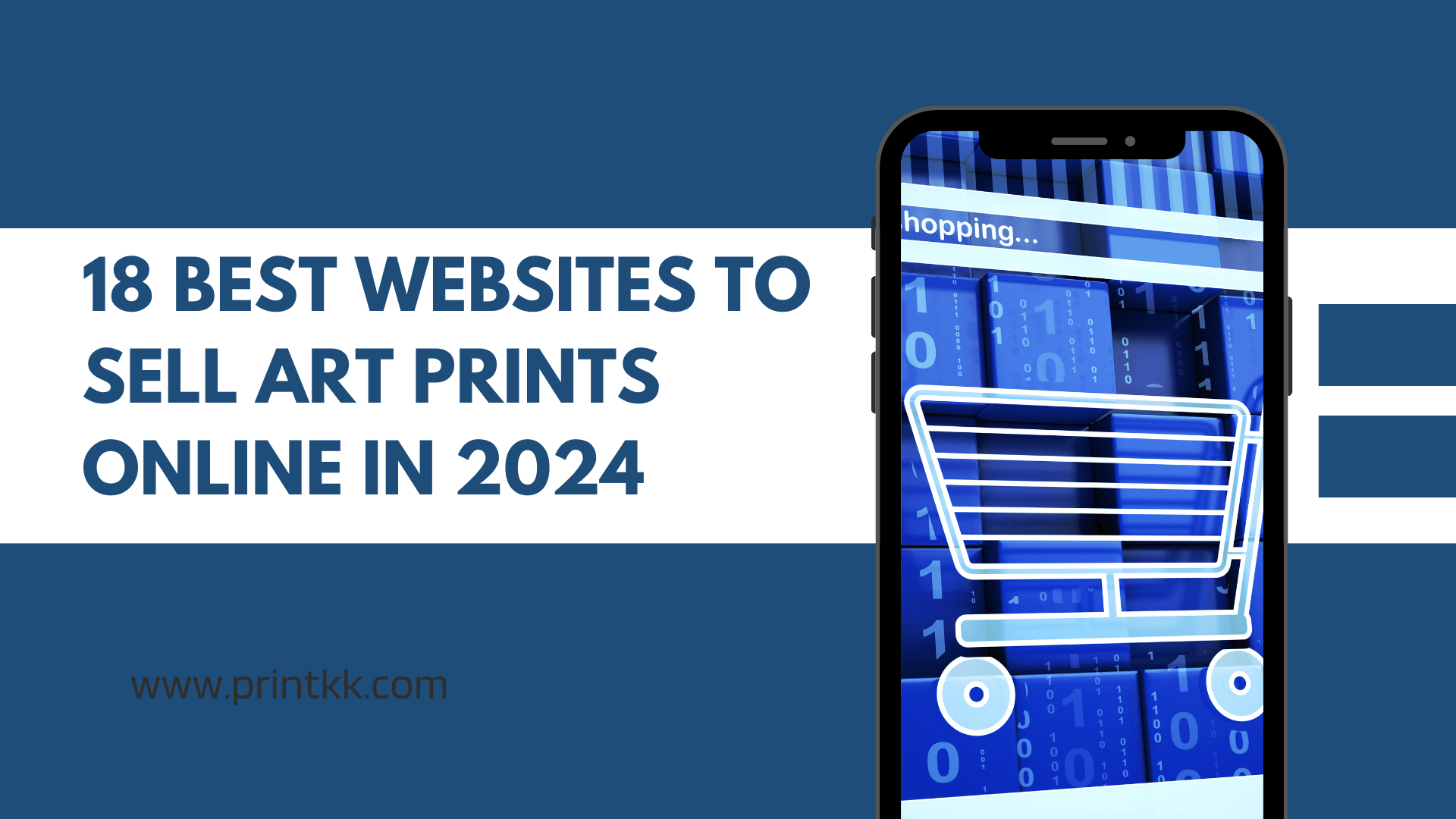
Welcome to "18 Best Websites to Sell Art Prints Online in 2025." In this guide, we explore the top online platforms for artists and entrepreneurs to showcase and sell their artwork. From well-known global marketplaces to niche sites, we'll help you find the perfect fit for your art style. Dive into the digital art world with us and discover where your creations will thrive!
18 Best Websites to Sell Art Prints Online
As an artist or designer, finding the right platform to sell your art can be a game-changer. Whether you are an established artist, a newcomer, or somewhere in between, these 18 websites offer diverse and effective ways to sell your art prints online.
Etsy
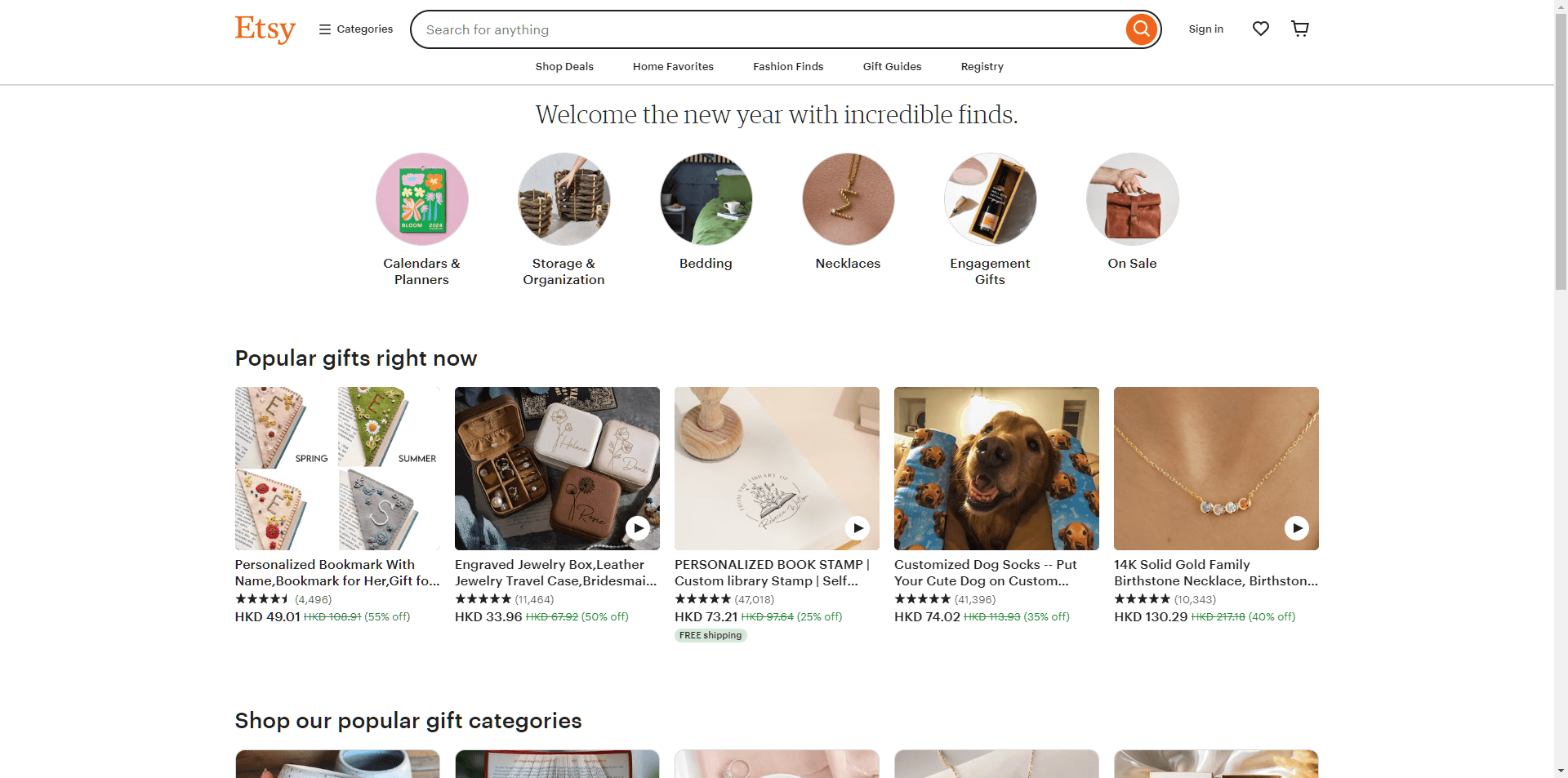
Etsy is a well-established global online marketplace with a focus on handmade, vintage, and unique items. It's a top choice for artists looking to sell art prints alongside other crafts and artisanal products.
- Advantage
- The platform's expansive and diverse global audience provides artists with significant exposure. Etsy's reputation for unique and handcrafted items means that it attracts buyers who are looking for something special and not mass-produced. For those who are looking to expand their reach even further, a Print on Demand Company like PrintKK can offer additional avenues to showcase and sell their custom-designed products. Its user-friendly interface simplifies the process of setting up a shop, and the community of sellers can be very supportive, offering advice through forums and groups.
- Disadvantage
- The high level of competition on Etsy means that new artists may find it challenging to get noticed. Additionally, the fees, including listing fees, transaction fees, and payment processing fees, can add up, especially for artists just starting out or those with lower-priced items.
Society6
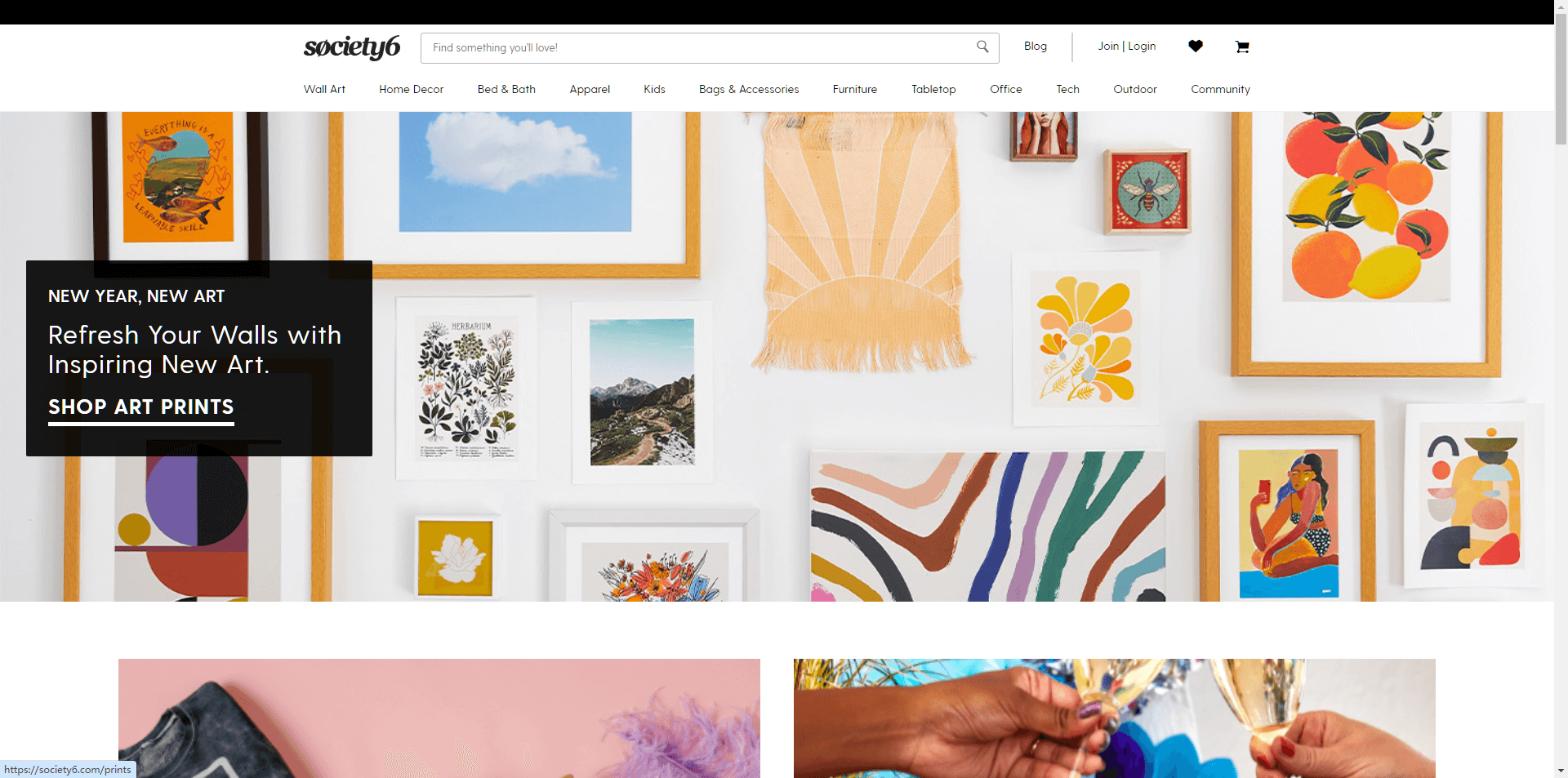
Society6 is a print-on-demand service that transforms artists' works into various products, from prints to phone cases. It's popular for its ease of use and range of items.
- Advantage
- Excellent for artists wanting to print their designs on various products. Royalty system is straightforward.
- Disadvantage
- Limited control over pricing and less direct interaction with customers.
Shopify

Shopify is a robust e-commerce platform that empowers artists to create their own branded online stores, providing complete control over the customer's shopping experience.
- Advantage
- Artists using Shopify have the freedom to design their store to reflect their brand, creating a cohesive and professional online presence. This control extends to customer service, pricing, and marketing. Shopify also offers a wide range of apps and tools to help artists optimize their store and automate parts of their business, which can be a huge time-saver.
- Disadvantage
- While Shopify gives artists a lot of control, it also requires them to be proactive in driving traffic to their store. Unlike marketplaces with built-in audiences, Shopify store owners must invest time and resources into marketing and SEO to attract customers. Additionally, there are monthly fees associated with maintaining a Shopify store, which can be a consideration for artists on a budget.
Redbubble
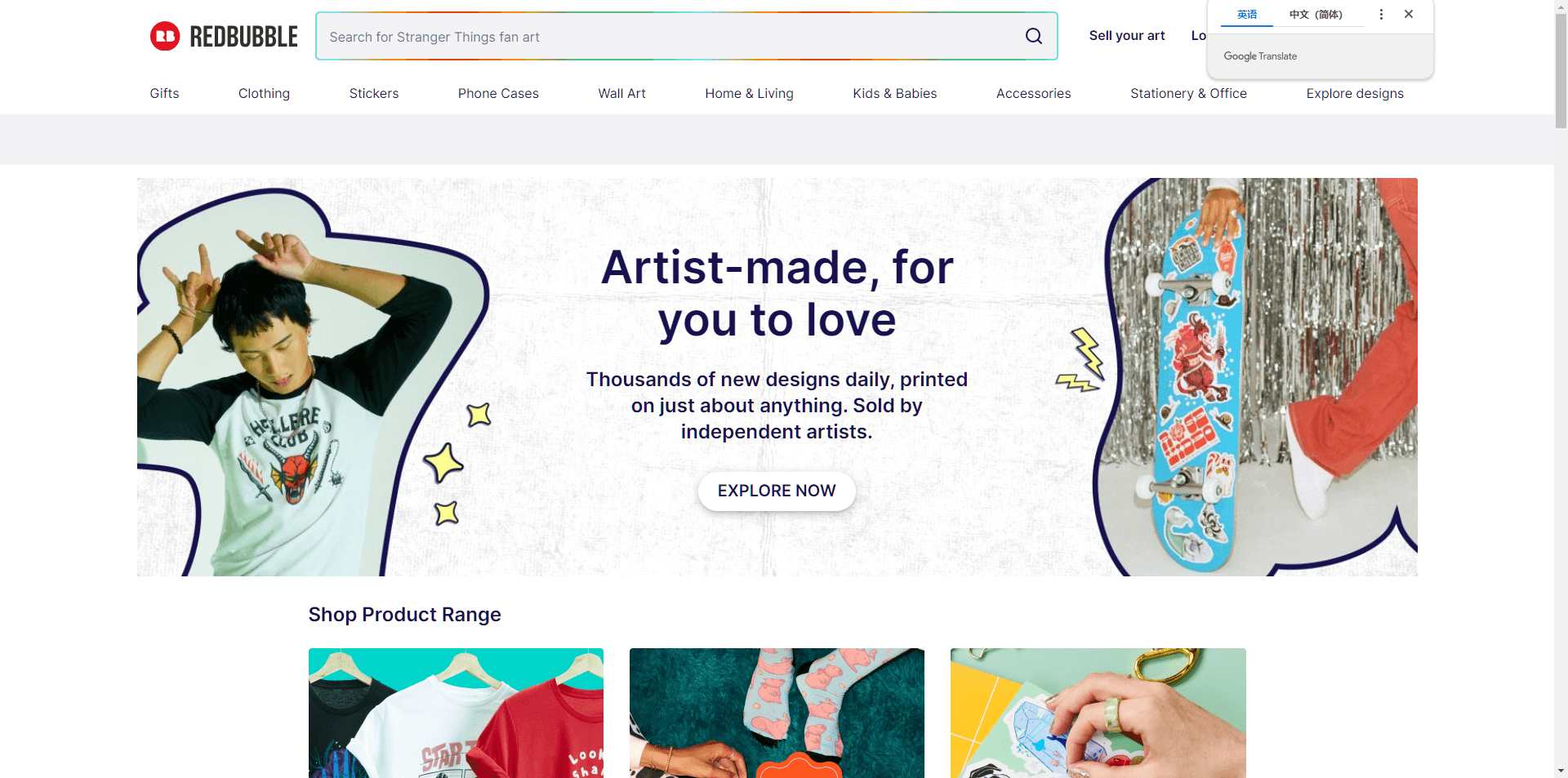
Redbubble is a user-friendly online marketplace that offers print-on-demand services, allowing artists to sell their designs on a wide array of products.
- Advantage
- Redbubble is particularly appealing for artists who want to monetize their designs without the hassle of managing inventory, production, or shipping. The platform handles all aspects of the fulfillment process, leaving artists free to focus on creating. Redbubble's broad product range means that artists can see their designs on everything from apparel to home decor, increasing the potential for sales.
- Disadvantage
- The ease of use comes at the cost of control. Artists on Redbubble have limited influence over the production quality and pricing of their products. The platform sets base prices, and artists can only control the markup. This can make it difficult to compete on price while still earning a significant profit.
eBay
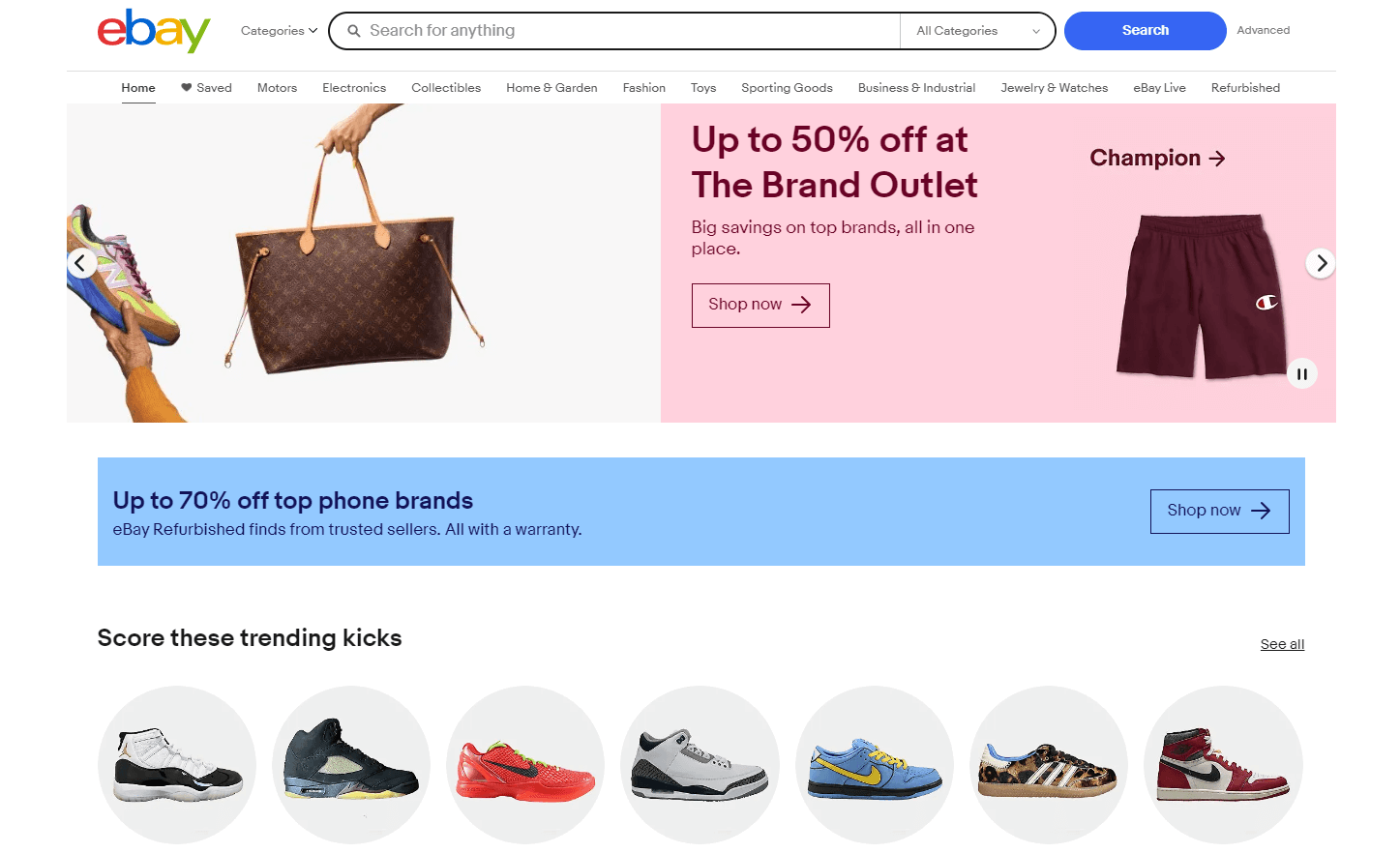
eBay is a well-known online marketplace that offers a wide range of products, including art prints.
- Advantage
- Huge international market and flexible selling options (auction or fixed price).
- Disadvantage
- Intense competition and fees can eat into profits.
Zazzle
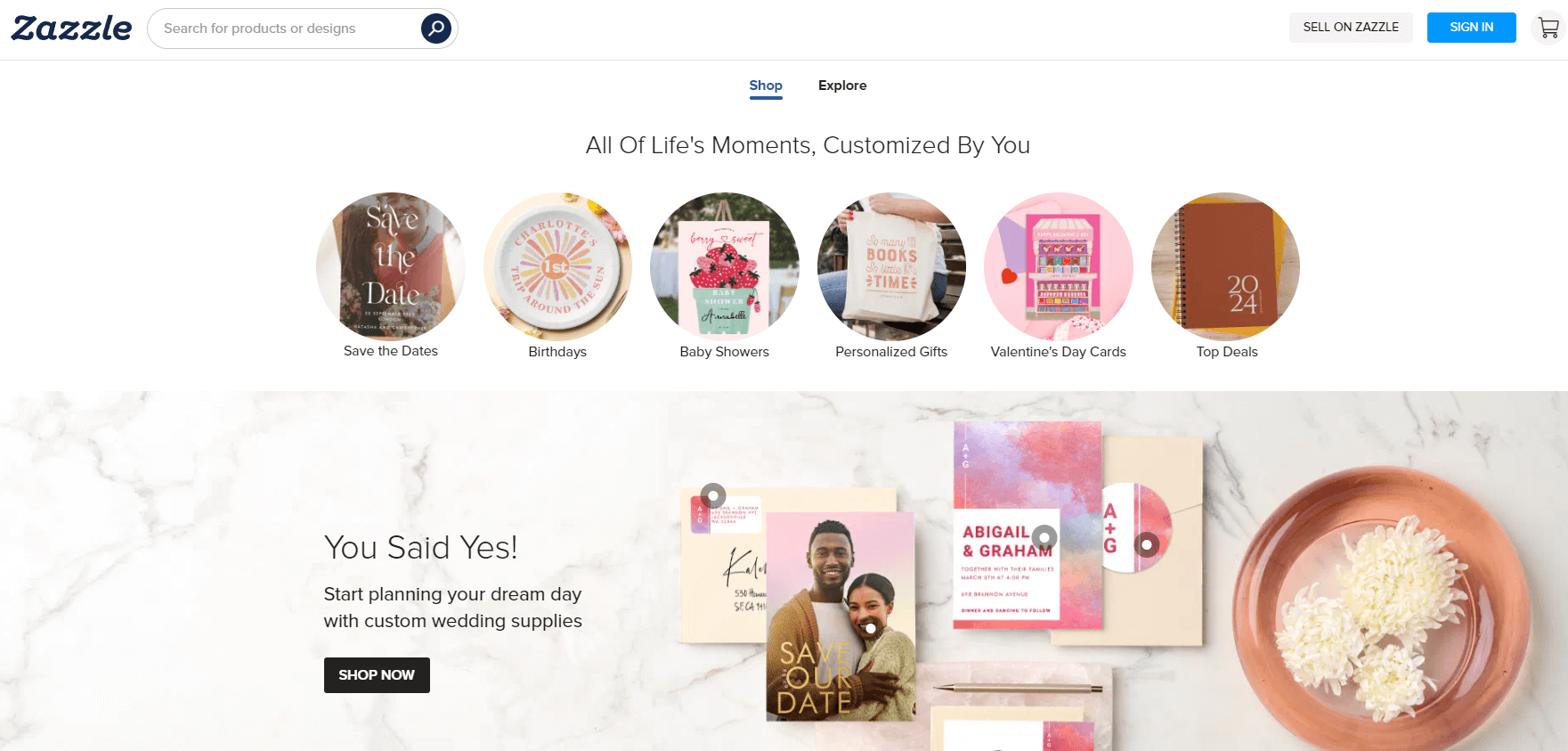
Zazzle is a creative marketplace that allows artists to sell their designs on a range of products, from prints to apparel.
- Advantage
- Great for diversifying art onto different products. Artist sets their own royalty rates.
- Disadvantage
- Crowded marketplace can make it hard to stand out.
Artfinder

Artfinder is an online art marketplace dedicated to selling original artworks and limited edition prints.
- Advantage
- Targets art collectors, ideal for selling original and high-quality prints.
- Disadvantage
- Requires application approval, and there's a commission on sales.
ArtPal

ArtPal is a commission-free online gallery where artists can sell both original art and prints.
- Advantage
- Commission-free and offers a wide range of tools for selling art.
- Disadvantage
- Lower traffic compared to larger marketplaces.
Artquid
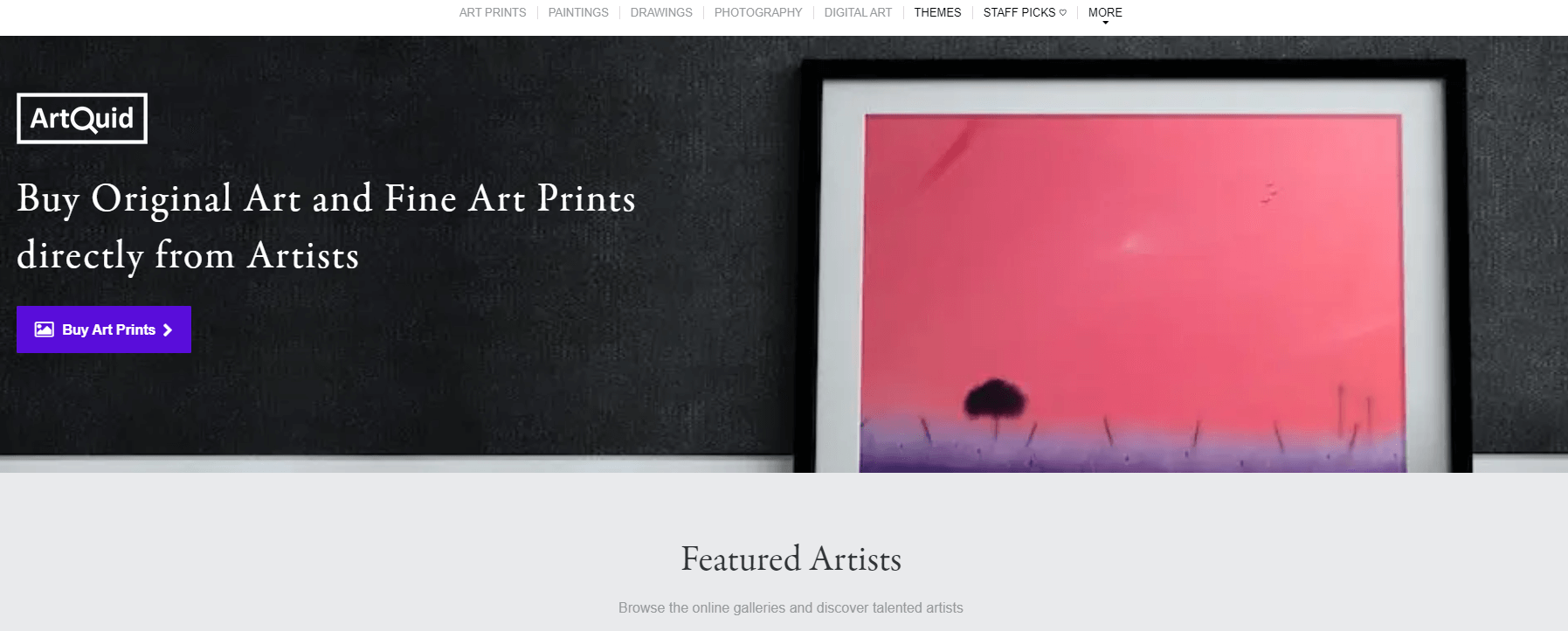
Artquid is a professional network that connects artists with collectors and offers 3D gallery displays.
- Advantage
- Connects artists with galleries and collectors. Also offers 3D gallery displays.
- Disadvantage
- Smaller audience and requires a subscription for premium features.
Amazon Handmade
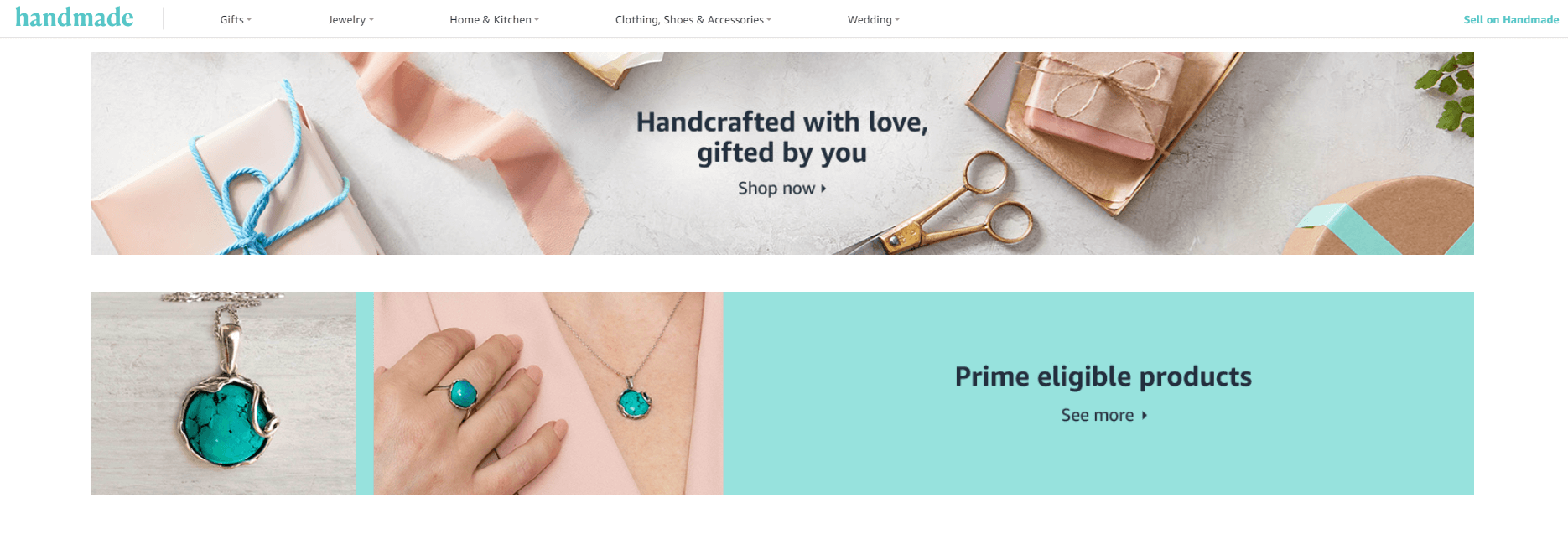
Amazon Handmade is a section of Amazon focused on handcrafted items, including art prints.
- Advantage
- Access to Amazon's vast customer base and trusted platform.
- Disadvantage
- Strict application process and competition with mass-produced items.
Saatchi Art
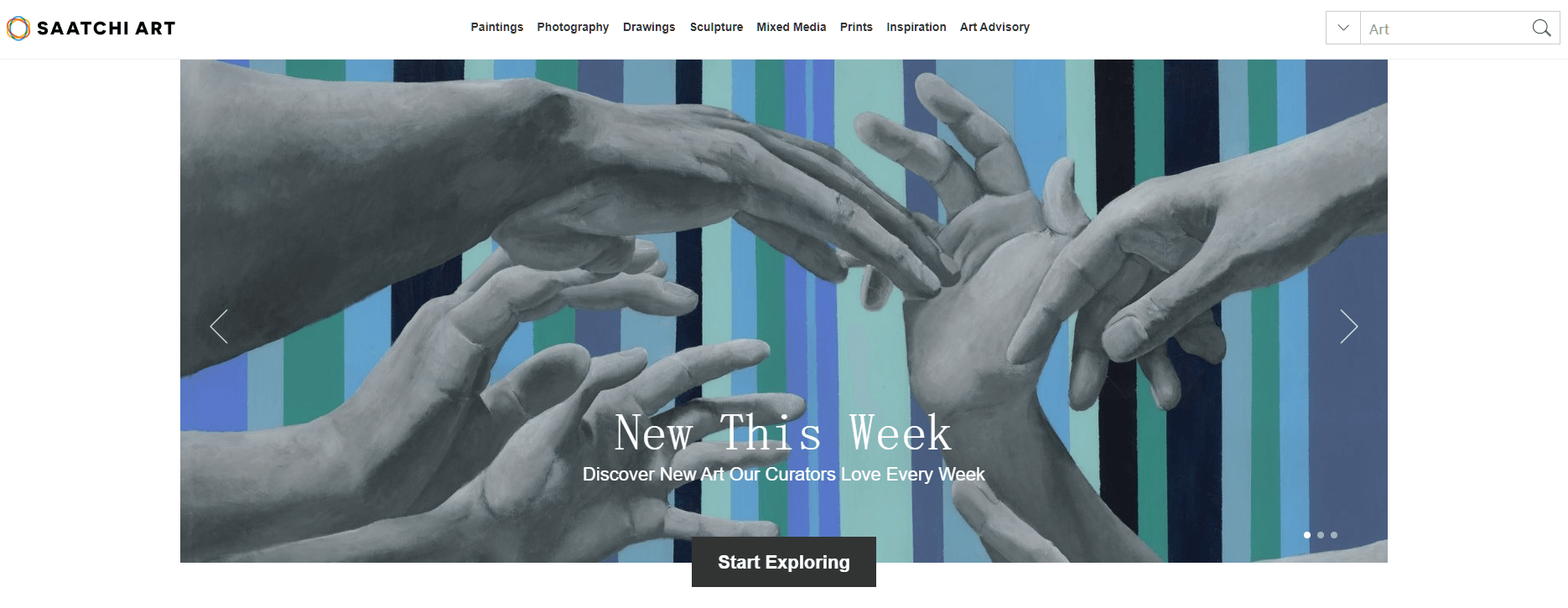
Saatchi Art is a premier online art gallery known for selling original artwork and high-quality prints, targeting collectors and art enthusiasts worldwide.
- Advantage
- Saatchi Art's positioning in the high-end market provides artists with the opportunity to reach serious collectors willing to invest in art. The platform offers editorial features, curatorial support, and promotion, which can be invaluable for artists looking to establish or enhance their reputation in the art world. The platform also handles shipping, providing artists with a hassle-free way to reach an international audience.
- Disadvantage
- The higher commission rates can be a downside for artists, as a significant portion of the sale price goes to the platform. Additionally, the competitive environment means that artists must work hard to stand out, and there's no guarantee of being featured in Saatchi Art's curated collections.
DeviantArt
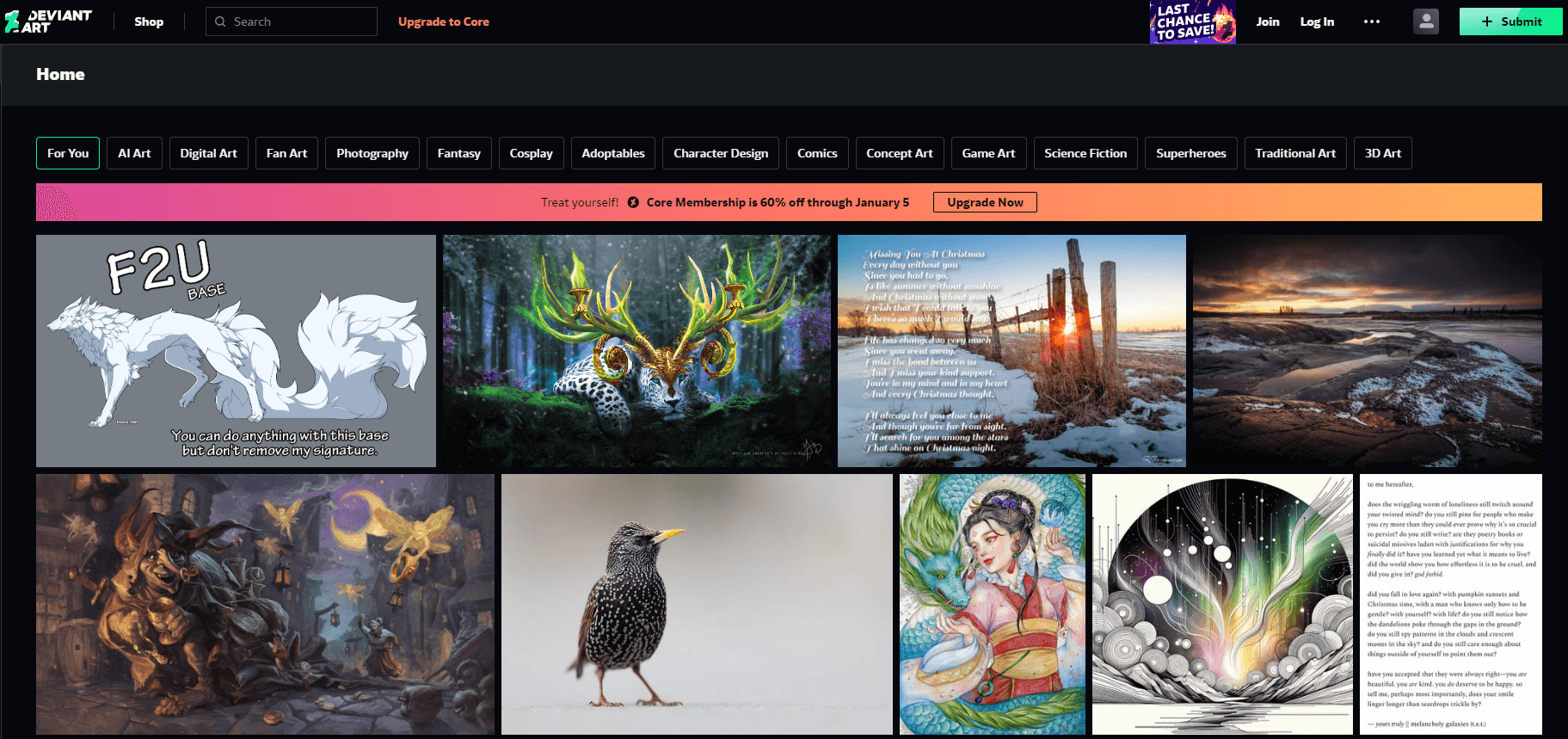
DeviantArt is a community-focused platform for digital artists, offering a space for artists to showcase and sell their work.
- Advantage
- Strong community for digital artists and feedback. Good for networking and exposure.
- Disadvantage
- Art can get lost in the sheer volume of work present.
Fiverr

Fiverr is an online platform where artists can offer and sell their creative services and products, including art prints.
- Advantage
- Directly connect with clients for custom work. Flexible pricing structure.
- Disadvantage
- Competitive and may require lower pricing to attract initial clients.
MyFonts
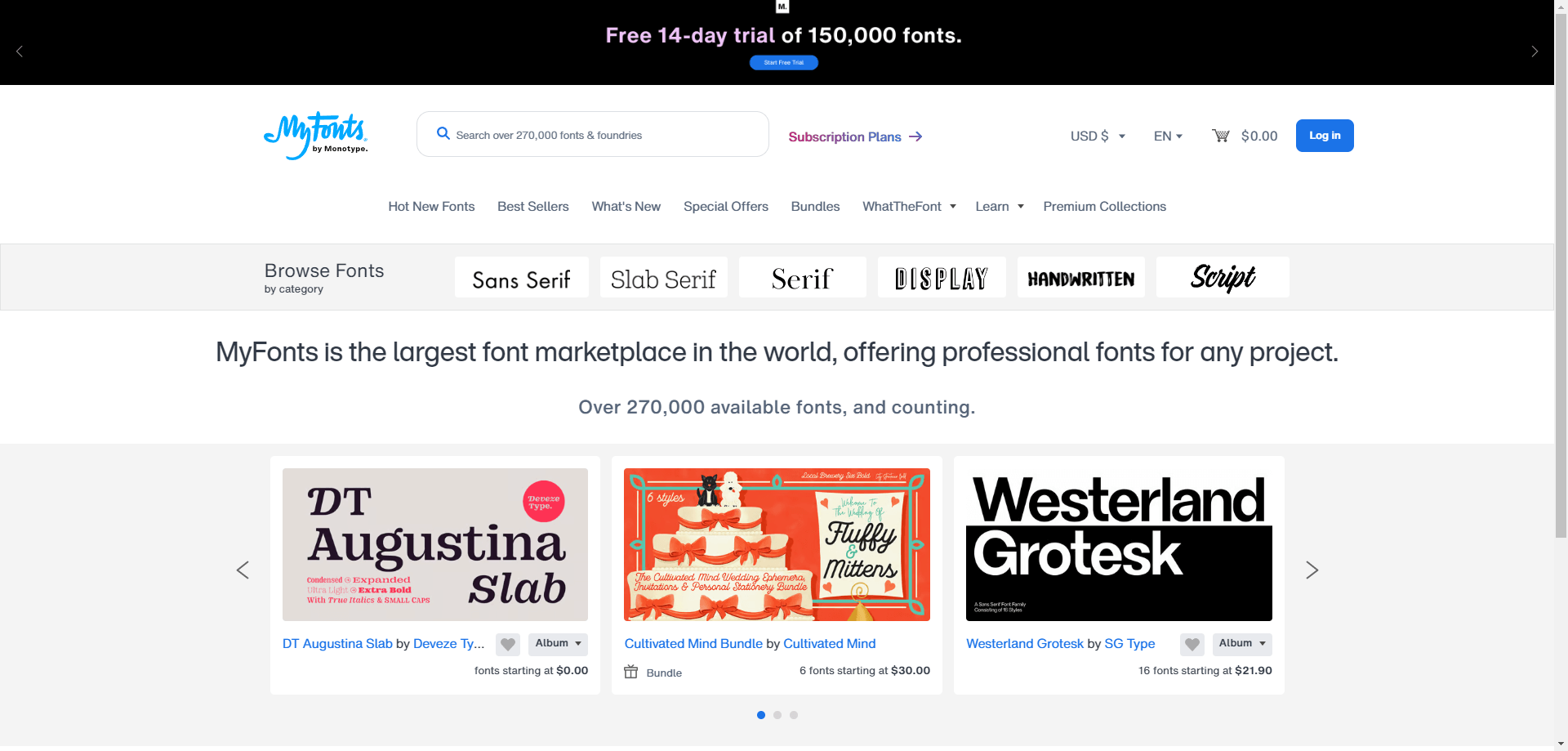
MyFonts offers a unique platform for artists specializing in typography and font design to sell their creations.
- Advantage
- Niche market for typography artists. Good royalty rates.
- Disadvantage
- Very specific market, less traffic for general art prints.
TurningArt

TurningArt is a platform specializing in art rentals and sales, targeting corporate clients and collectors.
- Advantage
- Unique in offering art rentals as well as sales, targeting corporate clients.
- Disadvantage
- Niche market, may not suit all artists.
Squarespace
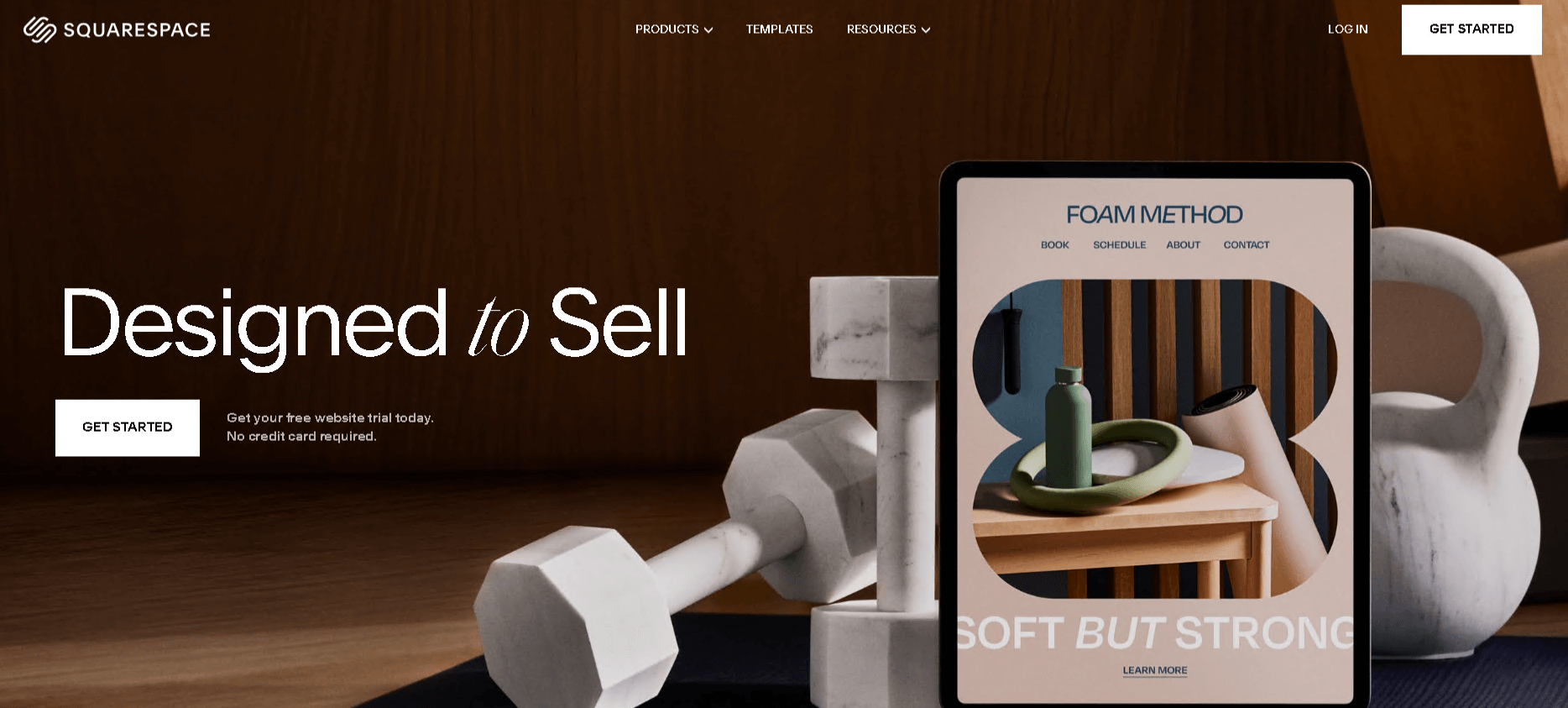
Provides sleek website designs for artists wanting to establish a professional online portfolio and store.
- Advantage
- Elegant website designs and full control over the selling process.
- Disadvantage
- Requires self-management and promotion of the site.
Jose Gallery
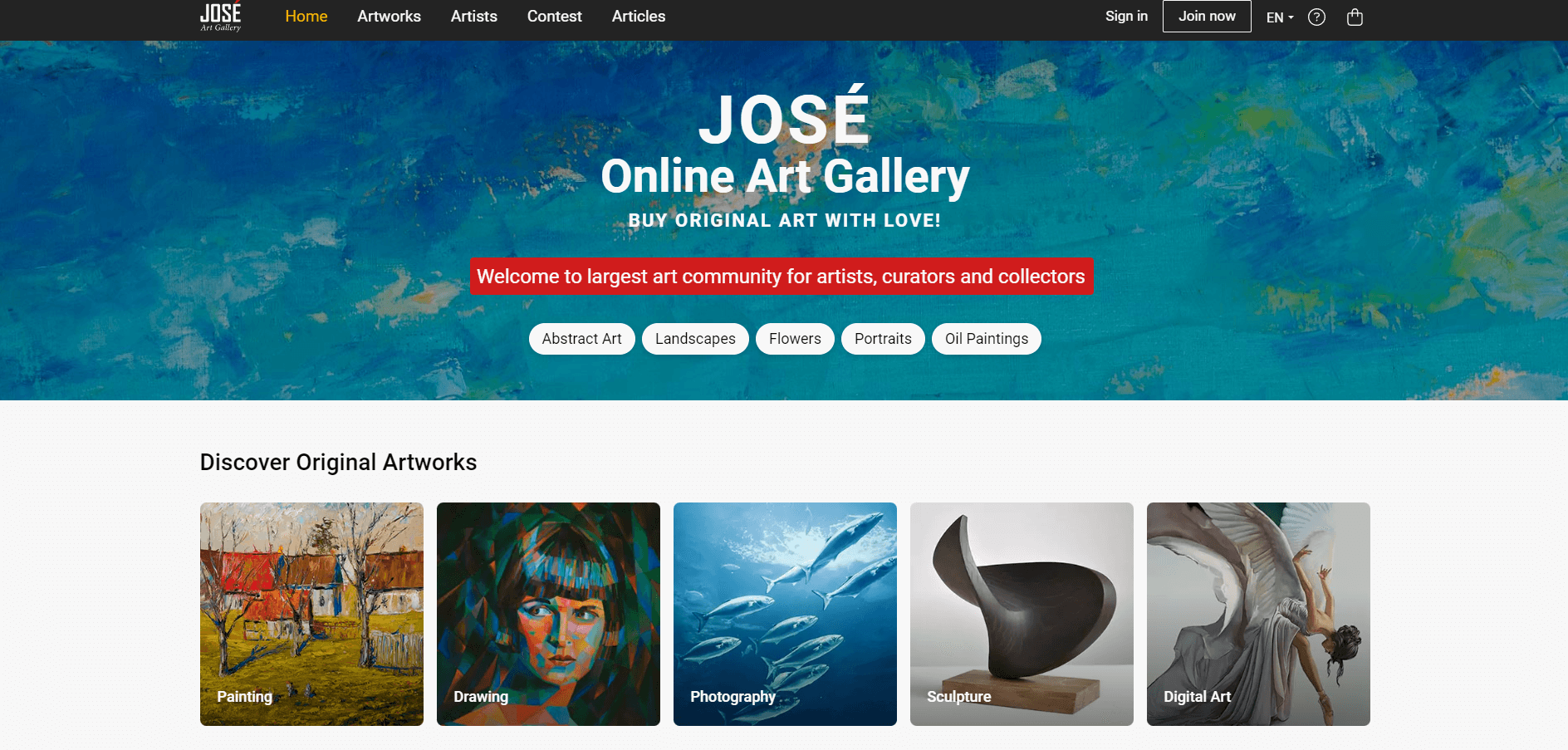
A curated platform for contemporary artists, ideal for those looking to join an exclusive collection of creators.
- Advantage: Focus on contemporary art and curated selection. Offers a prestigious platform.
- Disadvantage: Highly selective, making it hard for emerging artists to get featured.
Own Website and Social media
Creating your own website and leveraging social media platforms can be one of the most empowering steps an artist can take to build a personal brand and sell art prints.
- Advantage
- Having your own website gives you total control over your brand narrative, customer relationships, and the full profit margin of your sales. You can directly engage with your audience, gather their feedback, and build a community around your work. Social media platforms are powerful tools for marketing and can drive significant traffic to your website.
- Disadvantage
- The responsibility of managing and promoting a website can be daunting. It requires a consistent effort in content creation, SEO, customer service, and the technical aspects of website maintenance. Additionally, building a following on social media can be time-consuming, and there's always the challenge of algorithm changes affecting your reach.
Each of these platforms offers unique advantages and caters to different kinds of art and audiences. While some offer more exposure and a broader customer base, others cater to niche markets and provide more specialized services. Consider the nature of your art, the audience you wish to reach, and the level of support you need to choose the platforms that best suit your needs.
How to Choose the Right Websites to Sell Art?
Choosing the right websites to sell your art is a pivotal decision that can significantly impact your success. This decision should be guided by several important considerations.
- Understanding Your Art and Medium
- Firstly, identifying the platform that best aligns with your art type is crucial. Different platforms cater to diverse styles and mediums. Recognizing where your artwork fits best can help in attracting the right audience and maximizing sales potential.
- Platform Features and User Experience
- The fee structure of a platform is a key consideration. Some might charge a listing fee or a commission on sales, while others might offer free listings with different cost structures. Additionally, the ease of use of a platform and the tools available for showcasing your art are vital. High-quality image hosting, easy navigation, and effective marketing tools can greatly enhance your online presence.
- Community Engagement and Support
- Platforms with active communities and supportive environments offer valuable networking opportunities and assistance. Engaging with fellow artists and potential buyers can lead to fruitful collaborations and increased sales.
- Marketing and Sales Opportunities
- The visibility and reach a platform offers are critical. A site with high traffic increases the chances of your art being seen and sold. Furthermore, platforms that provide marketing and promotional tools can help in boosting your visibility. Also, the ability to integrate your listings with social media and other sales channels can expand your reach.
- Logistics and Policies
- Understanding the shipping and handling policies of a platform is essential, especially if these aspects are managed by the platform itself. This can greatly reduce your workload and streamline the selling process. Familiarizing yourself with the platform's return policy and the level of customer service offered is also important, as these factors can significantly impact customer satisfaction and your reputation.
How To Sell Art Online
Selling art online has become a viable and lucrative option for many artists, designers, and entrepreneurs. In the digital age, understanding how to effectively sell art online is as crucial as creating it. Here's a structured approach to help you navigate this landscape.
Establishing Your Online Presence
- Building a Strong Portfolio
- Your online portfolio is your virtual gallery. Ensure it's professional, easy to navigate, and showcases your best work. High-quality images and detailed descriptions of each piece are essential.
- Choosing the Right Platform
- Different platforms cater to various art styles and audiences. Research and select platforms that align best with your work, whether it's an established marketplace like Etsy or a niche site like Artfinder.
Understanding Your Audience
- Identifying Your Target Market
- Knowing who your art appeals to is key. Is your work suited for home decorators, art collectors, or businesses? Tailoring your art to your audience can significantly boost sales.
- Engaging with Your Audience
- Active engagement through social media, blogs, or email newsletters helps build a community around your work. This connection fosters loyalty and repeat customers.
Understanding Your Audience
- Identifying Your Target Market
- Knowing who your art appeals to is key. Is your work suited for home decorators, art collectors, or businesses? Tailoring your art to your audience can significantly boost sales.
- Engaging with Your Audience
- Active engagement through social media, blogs, or email newsletters helps build a community around your work. This connection fosters loyalty and repeat customers.
Leveraging Marketing and SEO
- Effective Online Marketing
- Utilize social media, content marketing, and email campaigns to promote your art. Consistent and high-quality content can drive traffic to your site or portfolio.
- Optimizing for Search Engines
- Understanding SEO is crucial in the digital marketplace. Use relevant keywords, meta descriptions, and alt text for images to improve your visibility in search engine results.
Streamlining the Sales Process
- Making Buying Easy
- Ensure the purchasing process is straightforward and secure. Offer multiple payment options and clear instructions on how to buy.
- Handling Shipping and Returns
- Clear policies on shipping and returns are essential. Consider including shipping costs in your price to offer 'free shipping' – a powerful incentive for online shoppers.
Conclusion
In conclusion, the journey of selling art online is a blend of artistic expression and savvy marketing. By carefully selecting the right platforms, engaging with your audience, utilizing digital marketing tools, and employing smart selling strategies, you can successfully navigate the online art market. Remember, the digital world is ever-evolving, and staying adaptable and informed is key to ongoing success in the vibrant and competitive world of online art sales.
FAQs
Is it worth selling art online?
Definitely. The online art market is booming, with over $1.5 billion worth of art sold in 2021 through top auction houses. In 2023, the global online art market hit $11 billion, making up 25% of the total art market. With a consistent growth trajectory and a projected compound annual growth rate of 9.0% from 2023 to 2030, selling art online has proven to be a lucrative and expanding avenue.
What website is the best to sell art?
The ideal website for selling art varies based on your art type and goals. Etsy is great for a diverse marketplace, while Saatchi Art suits high-end sales. Artfinder excels for original works, Shopify for personal stores, and Society6 for print-on-demand designs. Choose a platform that aligns with your art style and business objectives.
What is the most profitable art to sell online?
Profitable art forms online include limited edition prints, original digital art, and unique handmade crafts. The success largely depends on quality, uniqueness, and aligning with market demand.










 Global Shipping
Global Shipping




























